Spray-Painting Sullivan Goss
Artist David Flores Showcases New Mural and More at Downtown Art Gallery
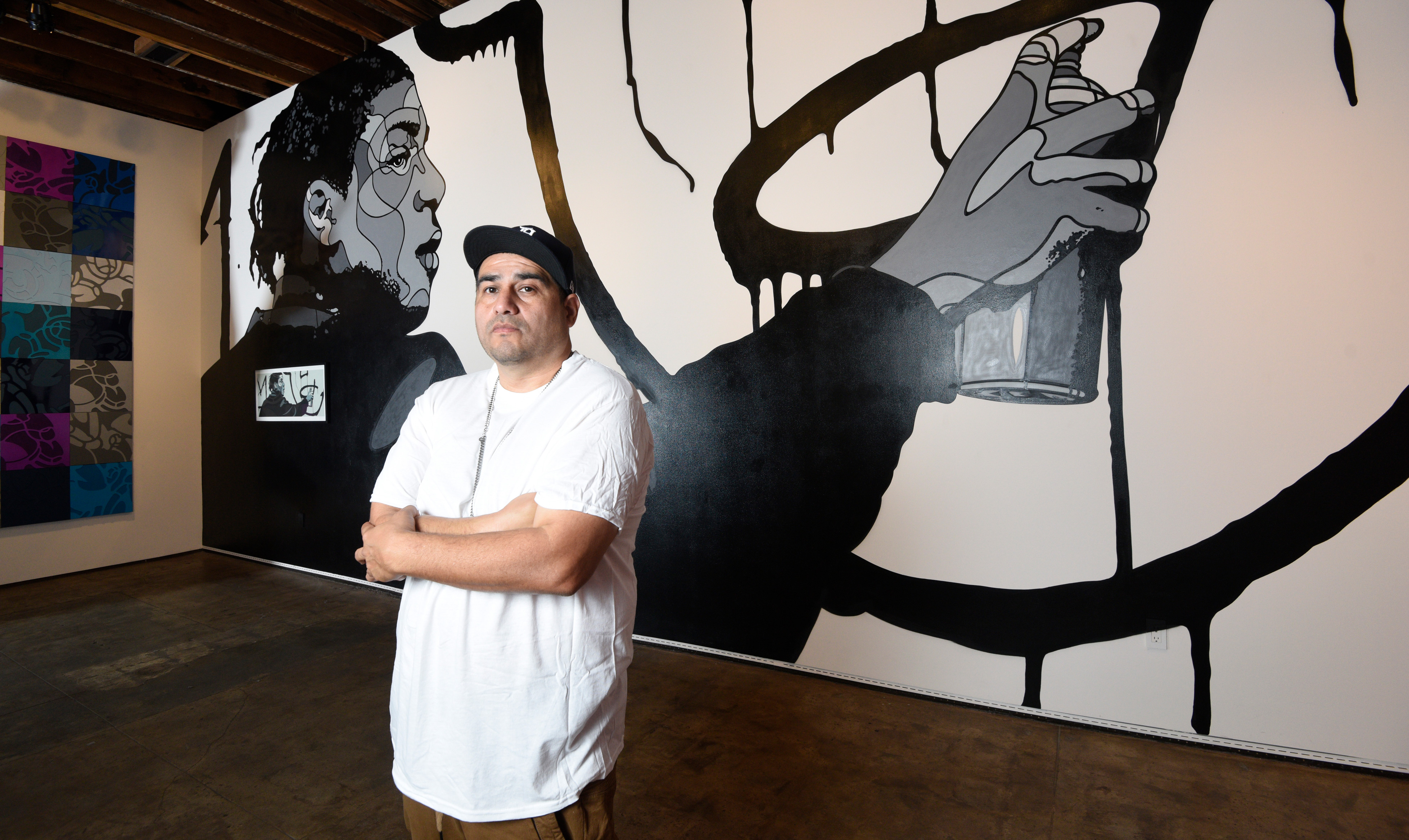
Spray paint was not created for people to express themselves on walls. It was developed in 1949 to demonstrate aluminum coating for radiators. But for David Flores, his spray can is a sword, his salvation, a plea to be known and understood. It’s eloquent, versatile, an expression of strength. He brandishes his paint can, spraying his way across buildings all over the world, as if his life depends on it.

The show at Sullivan Goss, An American Gallery, which runs through September 3, represents a homecoming for Flores. He has become one of the most preeminent, in-demand muralistas of our time, painting museums, stadiums, highway barriers, sides of buildings, racetracks, parking lots, and walls, interior and exterior, around the globe. Utilizing his “stained glass” painting technique, he appropriates popular icons and images and reinterprets them, blowing them up, literally and figuratively, in big public spaces, allowing the viewer, the public, to see those images in a new, emotional way. His murals transcend traditional styles and materials of paint, concrete, and canvas, emancipating industrial spaces, absorbing the geometry of walls.
Infused with contemporary ambitions and renewed passion, Santa Barbara’s Sullivan Goss gallery, under new owner/curator Nathan Vonk, has brought Flores home into the main gallery space at mural scale in an exceptional, groundbreaking show. It is one of the most high-profile exhibitions in the city’s history. The centerpiece of the show, titled “Downtown 81,” is a giant spray-painted mural of artist Jean-Michel Basquiat spray-painting a mural. Flores’s work takes flight in this stunningly designed composition as the movement of Basquiat emulates the movement of the spray-can brush strokes with which it was made, reminding us that Basquiat started as a tagger, spraying “Samo was here” through the streets of New York City before he became a well-respected gallery artist.
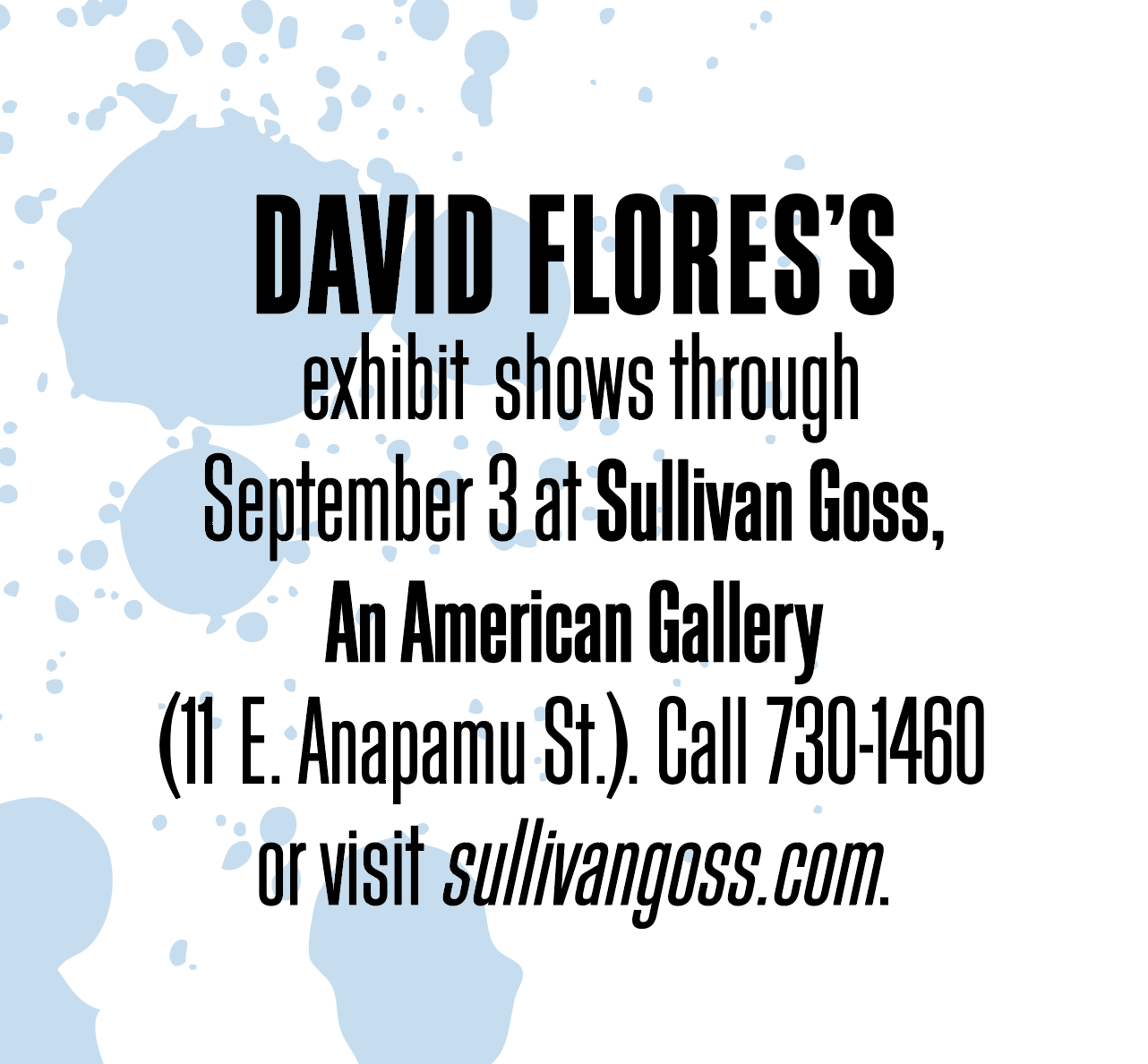
Flores’s eclectic multimedia show includes a hand-woven tapestry portrait of Salvador Dalí, matching molded plastic chairs bearing the images of Frida Kahlo and Diego Rivera, a giant portrait of Kendrick Lamar, a Fiesta-timed likeness of Pancho Villa, and a unique stained-glass collaboration between Flores and Judson Studios, the esteemed 120-year-old West Coast stained-glass academy. The show’s packed opening on Thursday, August 3, was a milestone event for the city’s art scene.

Central to Flores’s portraits are his signature facial lines. Like a phrenologist’s chart, they vary from subject to subject. “It’s what I see when I look at people,” Flores admits, adding that “the lines illuminate what’s going on inside from an outside perspective.” Deconstructing the emotions veiled within a face is Flores’s forte. As a manner of examining faces, it is infectious. Spend the day looking at Flores’s portraits, and soon you’ll be finding his lines in every face you see.
Flores recently discovered the surprising childhood inspiration for his portraiture style. “I’d been searching eBay for this toy I had when I was 5, ‘Gor, the King of the Terrons,’ a Super GI Joe villain. When I found it again, I couldn’t believe it. I must have been zapped with that image when I was a kid — it’s literally my work!”
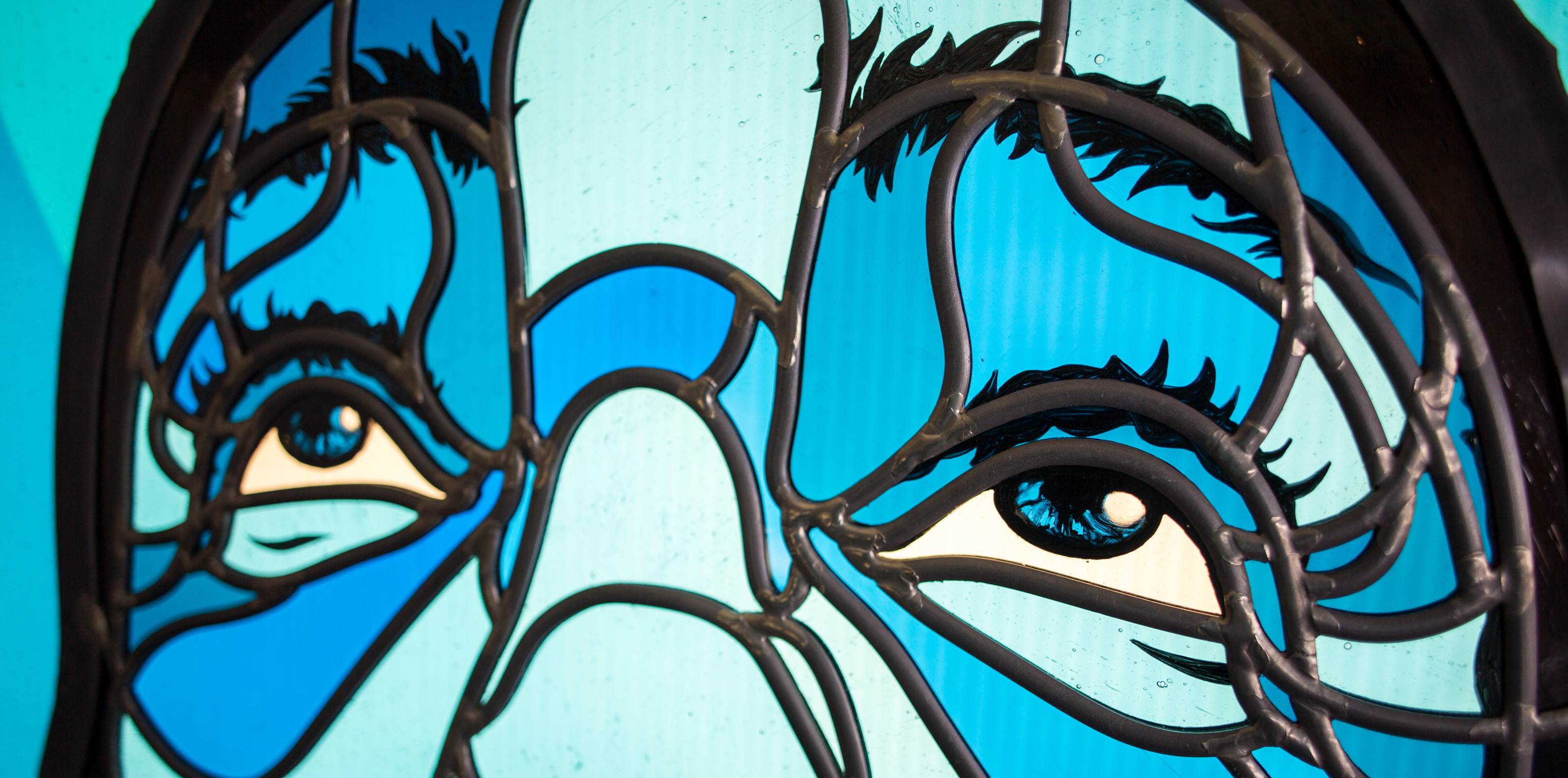
Viewing the toy packaging online is uncanny. The lizard monster is drawn with the same kind of line treatment and gradient color Flores uses in his murals. Even the background splash mimics the style he has developed. That Flores was already obsessed with pop culture at the age of 5 is not surprising. To this day, he’ll paint on anything: toys, skateboards, even his Baja Volkswagen bug and his turquoise VW bus. The creative progression that started in skateboard painting now seems to bleed onto any surface that can hold an image. His work is a culmination of multiple subcultures, including DIY, toy culture, skateboarding, mural making, and street wear, which all developed simultaneously. In this, Flores represents a part of the art world that didn’t exist until the last few decades.
“Does it belong in a gallery? Does it belong on the street? Does it belong in a museum?” Flores asks. “I’m not doing it on purpose; I grew up with childhood culture as a background.”
He’s now completed more than 80 murals, hijacking walls with his images of Mother Teresa, Mos Def, two drunk skull-faced Smurfs, Calvin and Hobbes, Coco Chanel, Sophia Loren, Secretariat, and a figure from Where the Wild Things Are that he painted here in Santa Barbara, on the back of the Church of Skatan at 26 East Gutierrez Street.
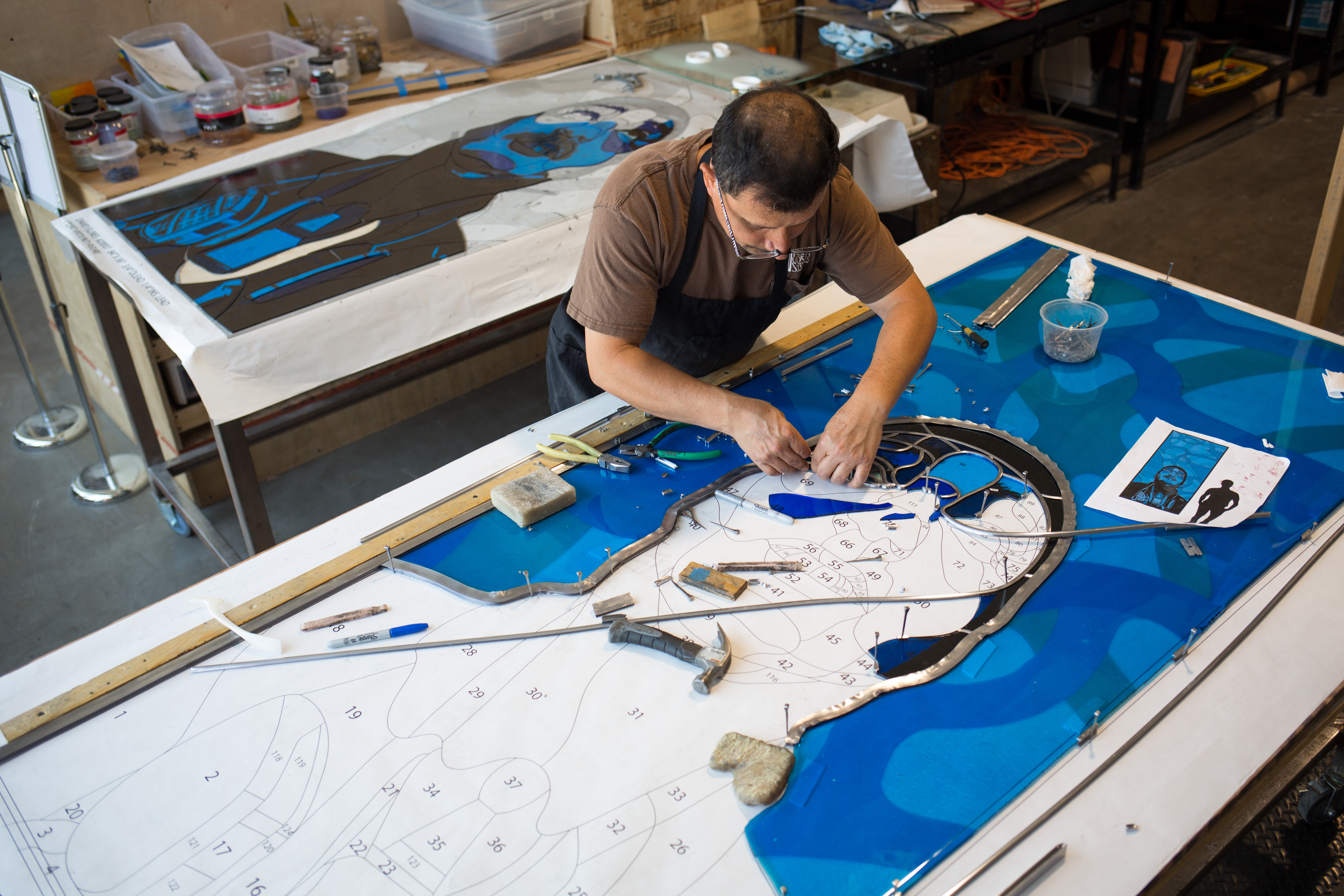
Unlike the “magic window” created by painting on canvas within a frame, the limits of a mural are the limits of the building itself, the physical reality of the wall. Ancient murals were tools for asserting the authority of the ruling class and the church. Merging with graffiti art and other contemporary cultures, modern murals have turned that idea upside down, creating a voice for the community, an opportunity to talk about the intersection of art and politics. Notably in recent years, murals were considered the antidote to inner-city graffiti. Now the graffiti artists have taken over painting the murals themselves. Flores has recently completed a collaboration with Santa Barbara High School’s Visual Arts & Design Academy (VADA), painting six murals in the Funk Zone.
The process of creating a mural outdoors can be brutal. “At USC we painted the back wall — the hot sun hit the wall and hit back at us. No shade. At the Aqueduct Racetrack in Queens, New York, it was 30 degrees. We were freezing. We [Flores refers to his assistant, Olivia Bevilacqua] both had the flu with temperatures of 102 degrees. When we finished, there was a layer of paint on our arms. It’s more than just making a painting,” he says. The physicality purifies his art. It’s a marathon. It’s a sports activity.
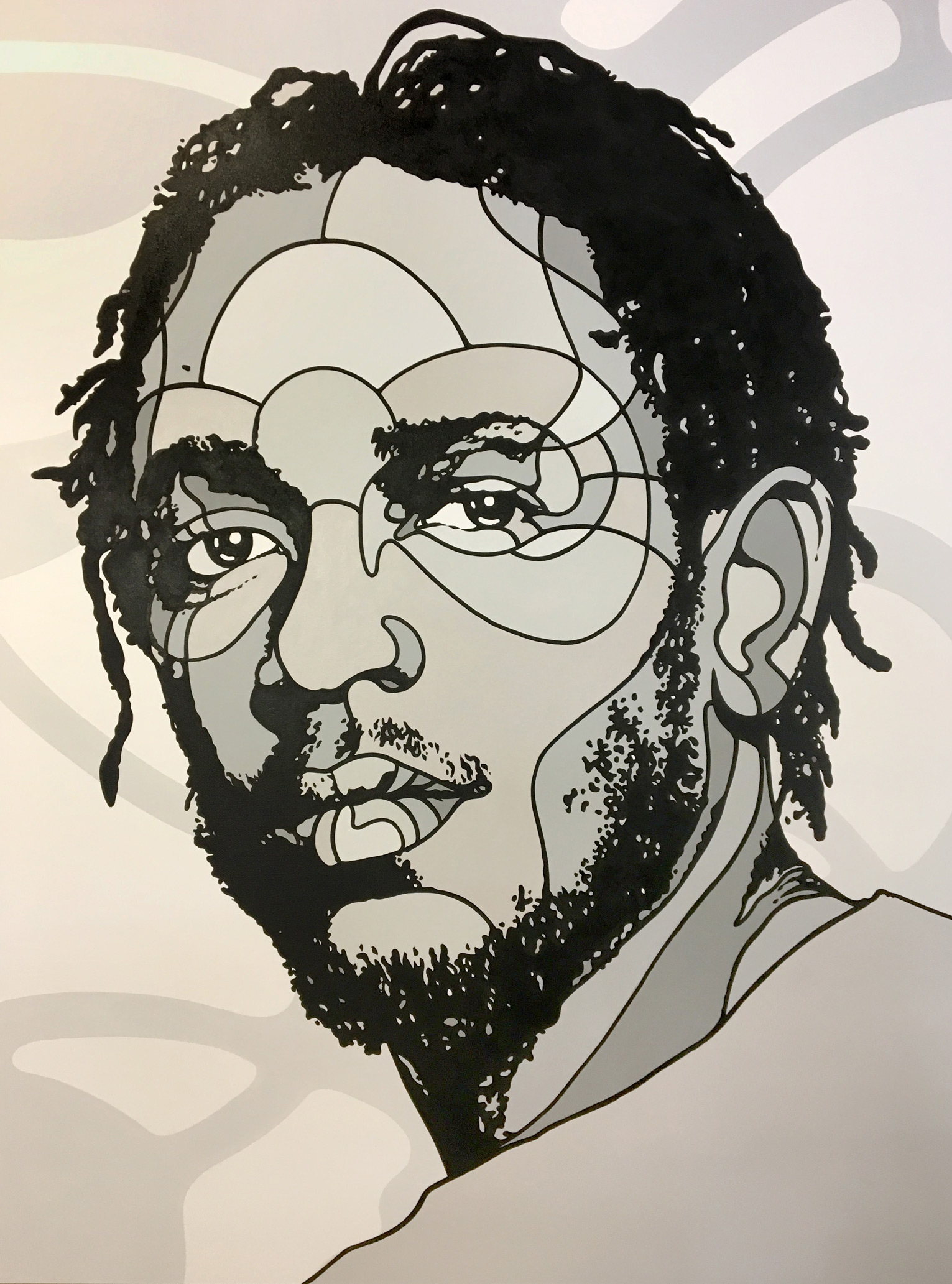
All of the artist’s themes come together in the breakthrough stained-glass window titled “The Muralist,” a collaboration with Judson Studios, which has been making stained glass since the late 1800s and created windows for Frank Lloyd Wright. “It’s his first piece that’s not a portrait of anyone,” gallery owner Vonk remarks. “It’s an allegoric tribute to ‘an anonymous muralist’ who has paved the road before him. It’s backlit; it feels religious.”
“The Muralist” is not an appropriated pop image but represents new ground for Flores. Utilizing the translucent mosaics of stained glass, an art form developed to celebrate gods, he pays homage to all of the people who influenced him, from Diego Rivera to Keith Haring, employing his signature stained-glass line stylings on stained glass.

For the team at Sullivan Goss, creating a large-scale gallery show around an artist who has been featured around the world, bringing him back to his Santa Barbara roots, was a choice not lightly made. “David is a unique person who can elevate the entire Santa Barbara art scene,” says Vonk. “It shows art consumers and collectors that Santa Barbara has produced great artists who are making great art now. It’s unappreciated because people don’t think of great art coming from their own backyard. This is a show that could be in any art city in the world — New York, Paris, Rome.” Vonk is a singular gallerist in Santa Barbara with a thorough understanding of the town’s long art history and who clearly intends to be a major participant in its future.
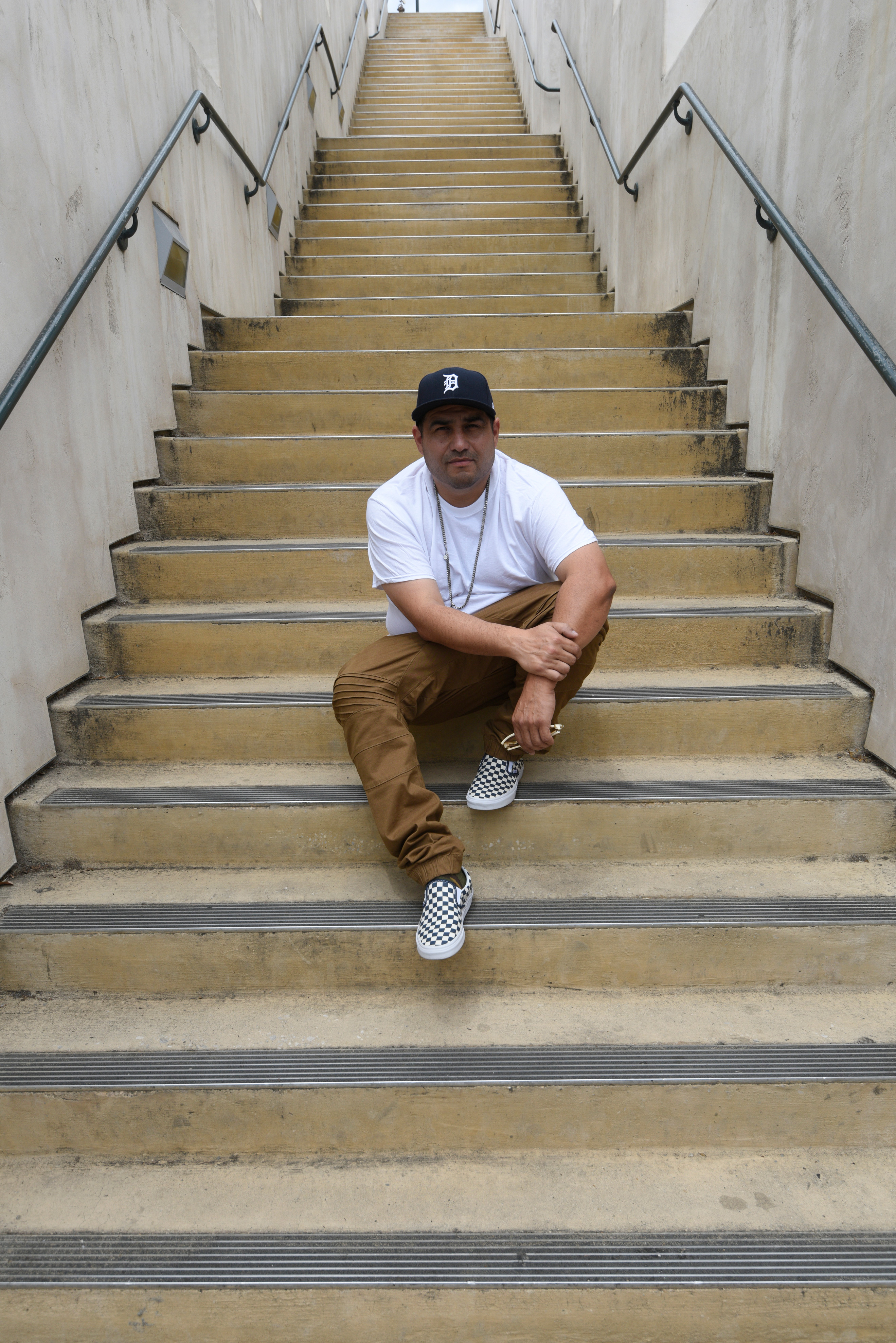
The show makes one wonder what veteran gallery owner Frank Goss, of the original Sullivan Goss, would have thought of a spray-can artist taking over the space he founded. “Frank wasn’t afraid to make a statement,” Vonk replies. Having worked for Frank Goss for almost a decade, Vonk’s memories of other cutting-edge exhibitions at the gallery remain vivid. “When Frank opened this location in 2006 during the Iraq War, his first show was the John Nava tapestries of teenagers wearing antiwar T-shirts. Someone threw a brick through the window. Frank put a frame around it with a note saying, ‘the coward’s way.’ Art shouldn’t be afraid. Frank wasn’t, and it was a great art show. You have to be willing to take risks,” says Vonk.
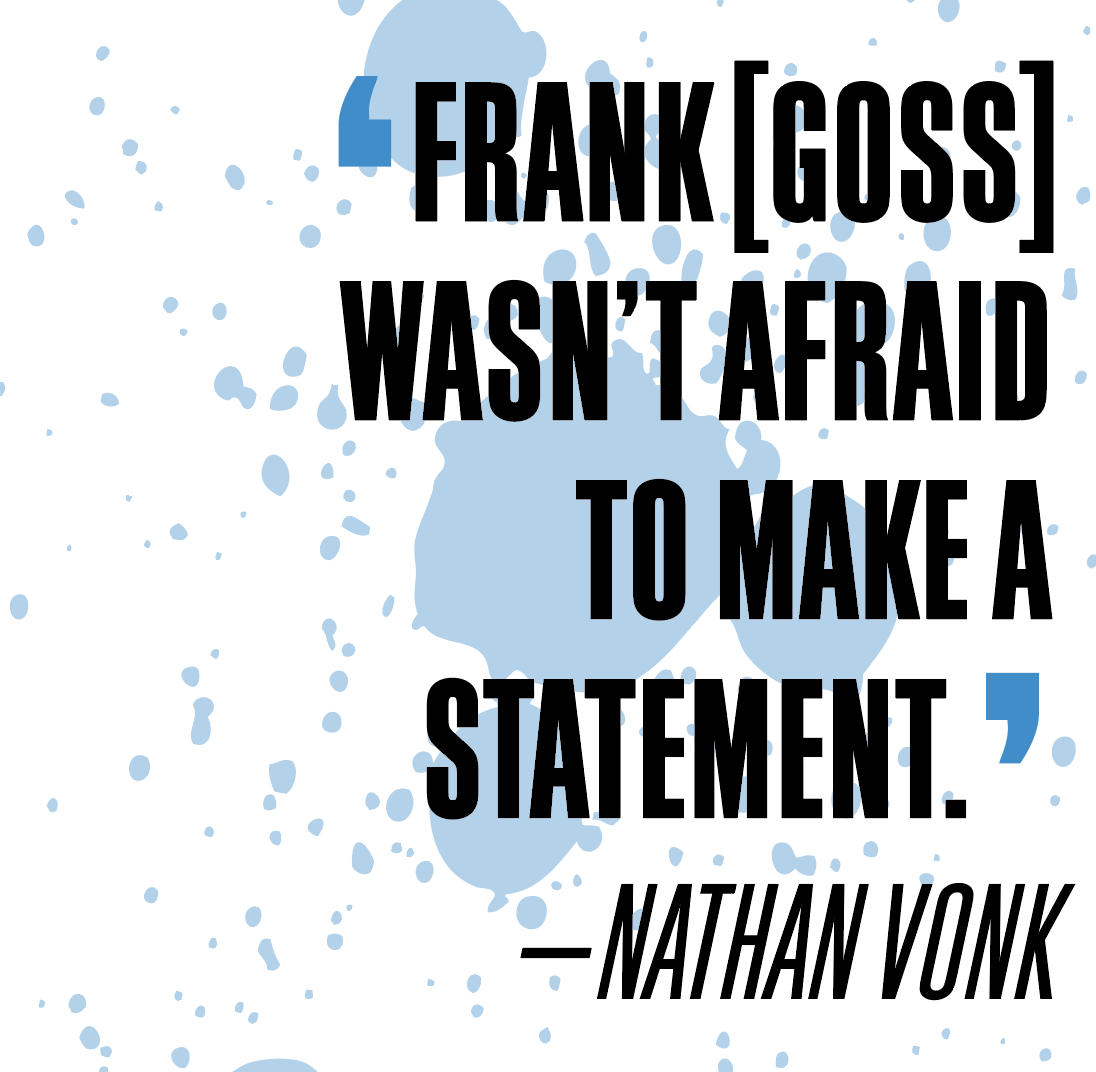
As for Flores, he too remembers his own early days in Santa Barbara. “When I came up here at 18, it was very hard-core,” Flores muses. “Pro skaters — I was a skater — and punk rock bands made Santa Barbara a hub of the Central Coast. MCA [the Museum of Contemporary Art, then known as Contemporary Arts Forum] had a skateboard show I attended. Santa Barbara was the spot to be. Now the hub has been lost. No one knows where it is.” Flores thinks for a little while. “Santa Barbara is ready for new stuff. It has the potential to start again.”



